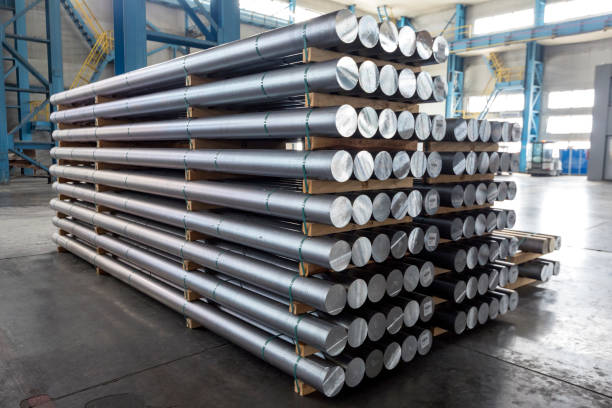All You Need to Know About Aluminum Billets
Aluminum billets are aluminum pieces used in many manufacturing processes. They come in various sizes and grades and are used for everything from consumer goods to large-scale industrial projects. This post will cover all the vital information you need to know about billets.
Table of Contents
What are the Applications of Aluminum Billets?
Advantages of Using Aluminum Billets
What are Aluminum Billets?
Billets are cylindrical bars of aluminum used in many industries. They’re produced through an extrusion process where a block of aluminum is pushed through a die to create a long, solid shape. They are then cut into smaller, manageable pieces ready for use.
What are the Applications of Aluminum Billets?
These materials are a vital component in modern-day industrial applications. Check out the various applications below:
Manufacturing
They are an essential part of the manufacturing process for various products. They are used to make a long string of components such as frames, handles, and other parts that must be structurally sound and aesthetically pleasing. These materials are also commonly used in casting operations, such as sand and permanent mold casting.
Automotive Applications
Aluminum billets are widely used in the auto industry for structural and aesthetic components. They create key auto components such as engine blocks, frames, wheels, and other parts that require strength and corrosion resistance. They also serve as the raw material for the decorative trim designed to enhance a car’s interior and exterior.
Aerospace
They are widely used in the aerospace industry due to their lightweight yet durable nature. Some of their uses in this industry include making fuselage frames, landing gear, and wings. Since they can take up extreme temperatures without wearing out, they are commonly used to build satellites and spacecraft.
Construction
In construction, aluminum billets are used for structural and aesthetic purposes. They create window frames, siding, and other structural elements that require durable raw materials. Billets are also used for outdoor decorative elements that may need corrosion resistance, such as railings.
Advantages of Using Aluminum Billets
These materials are a staple across nearly endless industries because they offer the following perks:
High Strength and Durability
Aluminum billets are naturally low-density and, consequently, incredibly strong and durable. These properties help reduce the risk of breakage during manufacturing while simultaneously prolonging the overall lifespan of the final product. Additionally, billets are corrosion-resistant.
Cost Effectiveness
Surprisingly, aluminum billets are a more efficient and economical way to transport large aluminum quantities. Extrusion, the key billet manufacturing process enables manufacturers to produce large amounts of aluminum in less time than traditional casting methods. Furthermore, billets are easier to transport and store than finished aluminum products, lowering shipping and warehousing costs. This makes them the golden raw material for many major automotive, construction, and aerospace industries.
Versatility
These materials are highly malleable. They can be cut, forged, and cast into complex shapes and profiles that would otherwise be impossible to achieve using other metals. This versatility makes them a popular choice for many businesses and industries.
Lightweight
Aluminum has a low density, weighing about 2.7 grams per cubic centimeter. Their lightweight nature means lower shipping costs and are easy to handle.
Conclusion
Above is everything you need to know about aluminum billets. They are versatile and efficient raw materials used across many industries, making them a popular choice for manufacturers and individuals alike.



